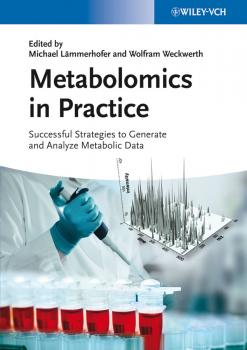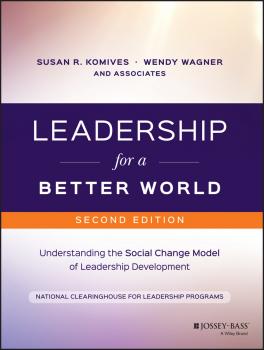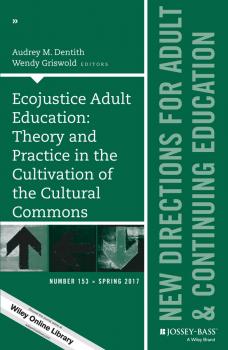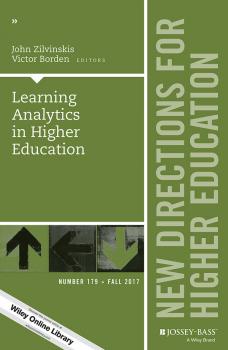Прочая образовательная литература
Различные книги в жанре Прочая образовательная литератураFluorescent Analogs of Biomolecular Building Blocks. Design and Applications
Fluorescent Biomolecules and their Building Blocks focuses on the design of fluorescent probes for the four major families of macromolecular building blocks. Compiling the expertise of multiple authors, this book moves from introductory chapters to an exploration of the design, synthesis, and implementation of new fluorescent analogues of biomolecular building blocks, including examples of small-molecule fluorophores and sensors that are part of biomolecular assemblies.
Metabolomics in Practice. Successful Strategies to Generate and Analyze Metabolic Data
Unlike other handbooks in this emerging field, this guide focuses on the challenges and critical parameters in running a metabolomics study, including such often-neglected issues as sample preparation, choice of separation and detection method, recording and evaluating data as well as method validation. By systematically covering the entire workflow, from sample preparation to data processing, the insight and advice offered here helps to clear the hurdles in setting up and running a successful analysis, resulting in high-quality data from every experiment. Based on more than a decade of practical experience in developing, optimizing and validating metabolomics approaches as a routine technology in the academic and industrial research laboratory, the lessons taught here are highly relevant for all systems-level approaches, whether in systems biology, biotechnology, toxicology or pharmaceutical sciences. From the Contents: * Sampling and Sample Preparation in Microbial Metabolomics * Tandem Mass Spectrometry Hyphenated with HPLC and UHPLC for Targeted Metabolomics * GC-MS, LC-MS, CE-MS and Ultrahigh Resolution MS (FTICR-MS) in Metabolomics * NMR-based metabolomics analysis * Potential of Microfluidics and Single Cell Analysis in Metabolomics * Data Processing in Metabolomics * Validation and Measurement Uncertainty in Metabolomic Studies * Metabolomics and its Role in the Study of Mammalian Systems and in Plant Sciences * Metabolomics in Biotechnology and Nutritional Metabolomics and more.
Object-Oriented Programming with SIMOTION. Fundamentals, Program Examples and Software Concepts According to IEC 61131-3
In mechanical engineering the trend towards increasingly flexible solutions is leading to changes in control systems. The growth of mechatronic systems and modular functional units is placing high demands on software and its design. In the coming years, automation technology will experience the same transition that has already taken place in the PC world: a transition to more advanced and reproducible software design, simpler modification, and increasing modularity. This can only be achieved through object-oriented programming. This book is aimed at those who want to familiarize themselves with this development in automation technology. Whether mechanical engineers, technicians, or experienced automation engineers, it can help readers to understand and use object-oriented programming. From version 4.5, SIMOTION provides the option to use OOP in accordance with IEC 61131-3 ED3, the standard for programmable logic controllers. The book supports this way of thinking and programming and offers examples of various object-oriented techniques and their mechanisms. The examples are designed as a step-by-step process that produces a finished, ready-to-use machine module. Contents: Developments in the field of control engineering – General principles of object-oriented programming – Function blocks, methods, classes, interfaces – Modular software concepts – Object-oriented design, reusable and easy-to-maintain software, organizational and legal aspects, software tests – I/O references, namespaces, general references – Classes in SIMOTION, instantiation of classes and function blocks, compatible and efficient software – Introduction to SIMOTION and SIMOTION SCOUT.
Leadership for a Better World. Understanding the Social Change Model of Leadership Development
The essential guide to the theory and application of the Social Change Model Leadership for a Better World provides an approachable introduction to the Social Change Model of Leadership Development (SCM), giving students a real-world context through which to explore the seven C's of leadership for social change as well as a approaches to socially responsible leadership. From individual, group, and community values through the mechanisms of societal change itself, this book provides fundamental coverage of this increasingly vital topic. Action items, reflection, and discussion questions throughout encourage students to think about how these concepts apply in their own lives. The Facilitator's Guide includes a wealth of activities, assignments, discussions, and supplementary resources to enrich the learning experience whether in class or in the co-curriculum. This new second edition includes student self-assessment rubrics for each element of the model and new discussion on the critical roles of leadership self-efficacy, social perspective, and social justice perspectives. Content is enriched with research on how this approach to leadership is developed, and two new chapters situate the model in a broader understanding of leadership and in applications of the model. The Social Change Model is the most widely-used leadership model for college students, and has shaped college leadership curricula at schools throughout the U.S. and other countries including a translation in Chinese. This book provides a comprehensive exploration of the model, with a practical, relevant approach to real-world issues. Explore the many facets of social change and leadership Navigate group dynamics surrounding controversy, collaboration, and purpose Discover the meaning of citizenship and your commitment to the greater good Become an agent of change through one of the many routes to a common goal The SCM is backed by 15 years of research, and continues to be informed by ongoing investigation into the interventions and environments that create positive leadership development outcomes. Leadership for a Better World provides a thorough, well-rounded tour of the Social Change Model, with guidance on application to real-world issues. Please note that The Social Change Model: Facilitating Leadership Development (978-1-119-24243-7) is intended to be used as a Facilitator's Guide to Leadership for a Better World, 2nd Edition in seminars, workshops, and college classrooms. You'll find that, while each book can be used on its own, the content in both is also designed for use togther. A link to the home page of The Social Change Model can be found below under Related Titles.
Ecojustice Adult Education: Theory and Practice in the Cultivation of the Cultural Commons. New Directions for Adult and Continuing Education, Number 153
As ecological issues increase and concern worldwide is mounting about the changing nature of work and cultural life, the field of adult education must respond. Adult education holds much potential for its ability to highlight cultural knowledge, promote change, and maximize the capacity of adults to work together in strengthening mutually supportive communities that contribute to a sustainable future. It is imperative that we (re)educate adults about productive but sustainable work and stronger local community living within an understanding of the relational being and the interdependency of all things. This edited collection explores the cultural roots of the ecological/cultural crisis and its relationship to adult education. The development of sound practices and new cultural understandings among adults are emphasized. Certainly, there exists evidence of small grassroots work that builds hope and skills for the coming of a new age of sustainable and just life. This volume discusses the: Connections between sustainability, environmental and ecojustice education, Forms of radical sustainability adult education, Established cultural institutions as potential agents of change, Principles of ecojustice education, and Implementation of these principles in formal and community education settings. This is the 153rd volume of the Jossey Bass series New Directions for Adult and Continuing Education. Noted for its depth of coverage, it explores issues of common interest to instructors, administrators, counselors, and policymakers in a broad range of education settings, such as colleges and universities, extension programs, businesses, libraries, and museums.
Performance Funding for Higher Education: What Are the Mechanisms? What Are the Impacts?. ASHE Higher Education Report, 39:2
After first appearing in 1979 in Tennessee, performance funding for higher education went on to be adopted by another 26 states. This monograph reviews research on a multitude of states to address these questions: • What impacts does performance funding have on institutional practices and, ultimately, student outcomes? • What obstacles and unintended effects do performance funding encounter? This monograph finds considerable impacts on institutional practices, weak impacts on student outcomes, substantial obstacles, and sizable unintended impacts. Given this, the monograph closes with a discussion of the implications for future research and for public policymaking on performance funding. This is the 2nd issue of the 39th volume of the Jossey-Bass series ASHE Higher Education Report. Each monograph is the definitive analysis of a tough higher education issue, based on thorough research of pertinent literature and institutional experiences. Topics are identified by a national survey. Noted practitioners and scholars are then commissioned to write the reports, with experts providing critical reviews of each manuscript before publication.
Learning Analytics in Higher Education. New Directions for Higher Education, Number 179
Gain an overview of learning analytics technologies in higher education, including broad considerations and the barriers to introducing them. This volume features the work of practitioners who led some of the most notable implementations, like: the Open Learning Initiative now at Stanford University, faculty-led projects at the University of Michigan, including ECoach and SLAM, the University of Maryland, Baltimore County?s Check My Activity and Indiana University?s FLAGS early warning system and e-course advising initiatives. Readers will glean from these experiences, as well as from a national project in Australia on innovative approaches for enhancing student experience, an informed description of the role of feedback within these technologies, and a thorough discussion of ethical and social justice issues related to the use of learning analytics, and why higher education institutions should approach such initiatives cautiously, intentionally, and collaboratively. This is the 179th volume of the Jossey-Bass quarterly report series New Directions for Higher Education. Addressed to presidents, vice presidents, deans, and other higher education decision makers on all kinds of campuses, it provides timely information and authoritative advice about major issues and administrative problems confronting every institution.
GIS and Geocomputation for Water Resource Science and Engineering
GIS and Geocomputation for Water Resource Science and Engineering not only provides a comprehensive introduction to the fundamentals of geographic information systems but also demonstrates how GIS and mathematical models can be integrated to develop spatial decision support systems to support water resources planning, management and engineering. The book uses a hands-on active learning approach to introduce fundamental concepts and numerous case-studies are provided to reinforce learning and demonstrate practical aspects. The benefits and challenges of using GIS in environmental and water resources fields are clearly tackled in this book, demonstrating how these technologies can be used to harness increasingly available digital data to develop spatially-oriented sustainable solutions. In addition to providing a strong grounding on fundamentals, the book also demonstrates how GIS can be combined with traditional physics-based and statistical models as well as information-theoretic tools like neural networks and fuzzy set theory.
Physics of Solar Cells. From Basic Principles to Advanced Concepts
The new edition of this highly regarded textbook provides a detailed overview of the most important characterization techniques for solar cells and a discussion of their advantages and disadvantages. It describes in detail all aspects of solar cell function, the physics behind every single step, as well as all the issues to be considered when improving solar cells and their efficiency. The text is now complete with examples of how the appropriate characterization techniques enable the distinction between several potential limitation factors, describing how quantities that have been introduced theoretically in earlier chapters become experimentally accessible. With exercises after each chapter to reinforce the newly acquired knowledge and requiring no more than standard physics knowledge, this book enables students and professionals to understand the factors driving conversion efficiency and to apply this to their own solar cell development.
Hydrodynamics of Time-Periodic Groundwater Flow. Diffusion Waves in Porous Media
Hydrodynamics of Time-Periodic Groundwater Flow introduces the emerging topic of periodic fluctuations in groundwater. While classical hydrology has often focused on steady flow conditions, many systems display periodic behavior due to tidal, seasonal, annual, and human influences. Describing and quantifying subsurface hydraulic responses to these influences may be challenging to those who are unfamiliar with periodically forced groundwater systems. The goal of this volume is to present a clear and accessible mathematical introduction to the basic and advanced theory of time-periodic groundwater flow, which is essential for developing a comprehensive knowledge of groundwater hydraulics and groundwater hydrology. Volume highlights include: Overview of time-periodic forcing of groundwater systems Definition of the Boundary Value Problem for harmonic systems in space and time Examples of 1-, 2-, and 3-dimensional flow in various media Attenuation, delay, and gradients, stationary points and flow stagnation Wave propagation and energy transport Hydrodynamics of Time-Periodic Groundwater Flow presents numerous examples and exercises to reinforce the essential elements of the theoretical development, and thus is eminently well suited for self-directed study by undergraduate and graduate students. This volume will be a valuable resource for professionals in Earth and environmental sciences who develop groundwater models., including in the fields of groundwater hydrology, soil physics, hydrogeology, geoscience, geophysics, and geochemistry. Time-periodic phenomena are also encountered in fields other than groundwater flow, such as electronics, heat transport, and chemical diffusion. Thus, students and professionals in the field of chemistry, electronic engineering, and physics will also find this book useful.









